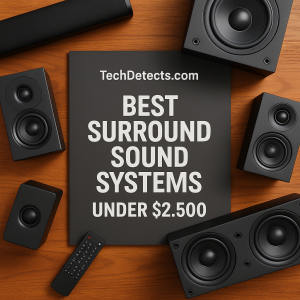Meta Quest 3 vs Apple Vision Pro: Which One’s Right for You?
In 2025, the virtual and mixed reality scene is dominated by two radically different titans: the Meta Quest 3 and the Apple Vision Pro. One is a mainstream, affordable powerhouse aimed at immersive gaming and casual mixed reality. The other is a premium, ultra-polished tool for spatial computing, productivity, and media consumption.

If you’re torn between the two, you’re not alone. Here’s how they compare—and which one is right for your needs.
Meta Quest 3 vs Apple Vision Pro
Specs and Performance Comparison
| Feature | Meta Quest 3 | Apple Vision Pro |
|---|---|---|
| Display | LCD, 2064×2208 per eye | Dual micro-OLED, ~3660×3200 per eye |
| Refresh Rate | 90Hz (up to 120Hz experimental) | 90Hz (100Hz for video content) |
| Processor | Snapdragon XR2 Gen 2 | Apple M2 + R1 chip |
| RAM | 8GB | 16GB |
| Tracking | Inside-out, hand + controller | Eye, hand, and gesture tracking |
| Battery Life | ~2 hours (internal battery) | ~2.5 hours (external battery pack) |
| Weight | ~515g | ~600–650g + tethered battery |
| Standalone | Yes | Yes |
👉 Buy Apple Vision Pro on Official Apple Website
Ecosystem and Content
Meta Quest 3 is designed for immersive gaming and mixed reality entertainment. It offers:
- Access to a massive VR game library including Asgard’s Wrath 2, Beat Saber, and Resident Evil 4 VR
- Full mixed reality capabilities using color passthrough cameras
- Popular fitness and social apps like Supernatural and Horizon Worlds
Apple Vision Pro, meanwhile, focuses on spatial computing with a productivity-first approach:
- visionOS includes apps like Safari, Mail, Notes, Calendar, and FaceTime, reimagined in 3D space
- High-fidelity video playback from Apple TV+, Disney+, and personal spatial videos
- Integration with Mac and iPhone using Continuity, Universal Control, and AirPlay
Use-Case Comparison
Gaming
Meta Quest 3 is the clear winner for gamers. It has better controller support, a deeper VR game library, and a more comfortable price point for casual to hardcore players.
Productivity
Apple Vision Pro excels at multitasking, spatial workspaces, and creative tools like Keynote, Freeform, and 3D media editing. It’s the superior choice for professionals.
Media and Entertainment
With ultra-sharp micro-OLED displays and rich spatial audio, Vision Pro delivers a cinematic experience that’s unmatched for watching shows, movies, and 3D content.
Fitness and Casual Mixed Reality
Meta Quest 3 is better suited for active use cases, including fitness games, movement-heavy MR apps, and casual gaming. It’s lighter, untethered, and more practical.
Budget Considerations
Meta Quest 3 is significantly more affordable, starting at just $499. For most users, it offers tremendous value without sacrificing core MR/VR features.
Apple Ecosystem Loyalty
If you’re already using a MacBook, iPhone, and iPad daily, Vision Pro integrates seamlessly. That continuity may tip the scales despite its higher cost.
Price and Value
- Meta Quest 3: $499 (128GB) or $649 (512GB). Offers the best all-around standalone VR experience for the price.
- Apple Vision Pro: Starts at $3,499. A serious investment for those seeking spatial computing excellence and ecosystem integration.
👉 Buy Apple Vision Pro on Official Apple Website
Verdict: Which One Should You Buy?
If you’re looking for an accessible, fun, and powerful way to dive into VR gaming, fitness, or mixed reality, the Meta Quest 3 is the clear choice. It’s the most well-rounded headset for everyday users.
But if your focus is productivity, immersive media, or premium creative tools—and you’re comfortable spending a premium—the Apple Vision Pro is unlike anything else on the market. It offers a glimpse of the future of computing, today.
Both headsets represent the cutting edge of spatial technology. Your choice depends on whether you want a headset built for play or purpose.
You might need to check it out: Should You Buy a VR Headset in August 2025—or Wait for Next-Gen?






